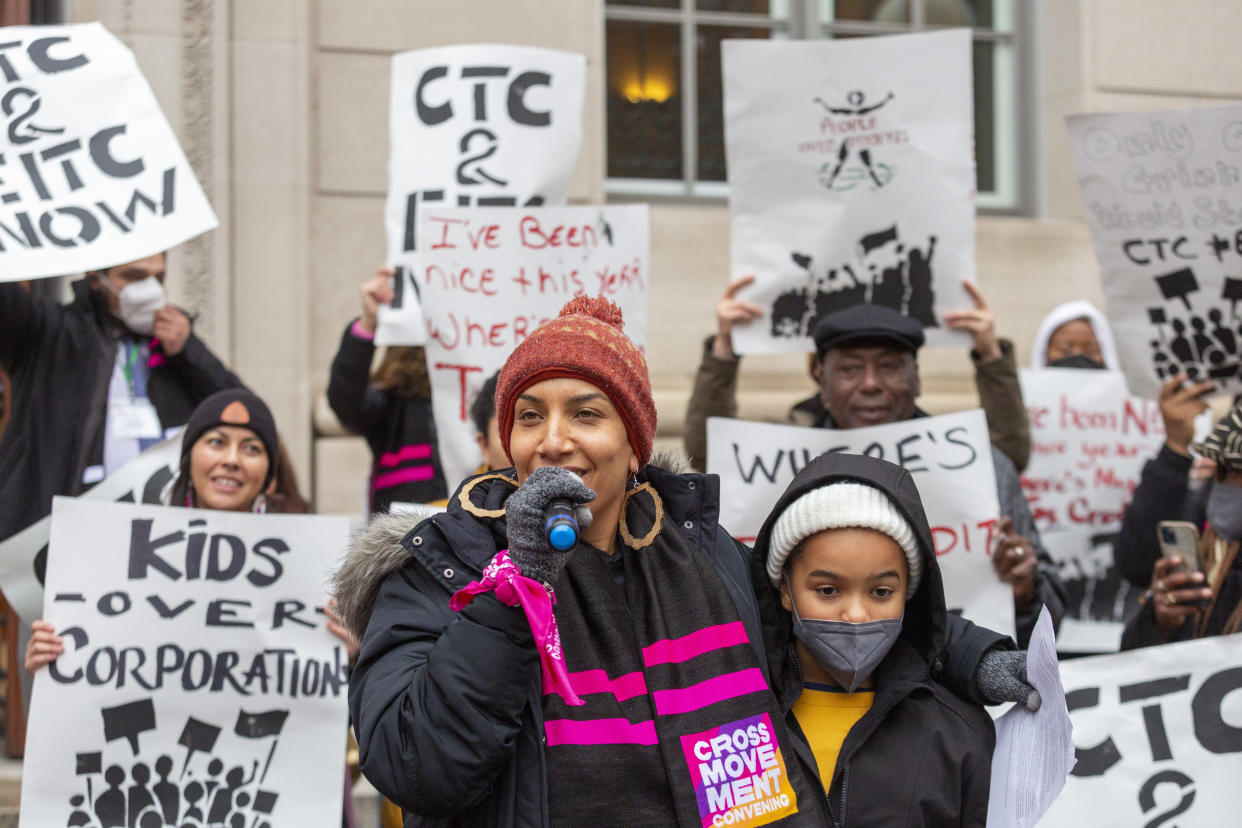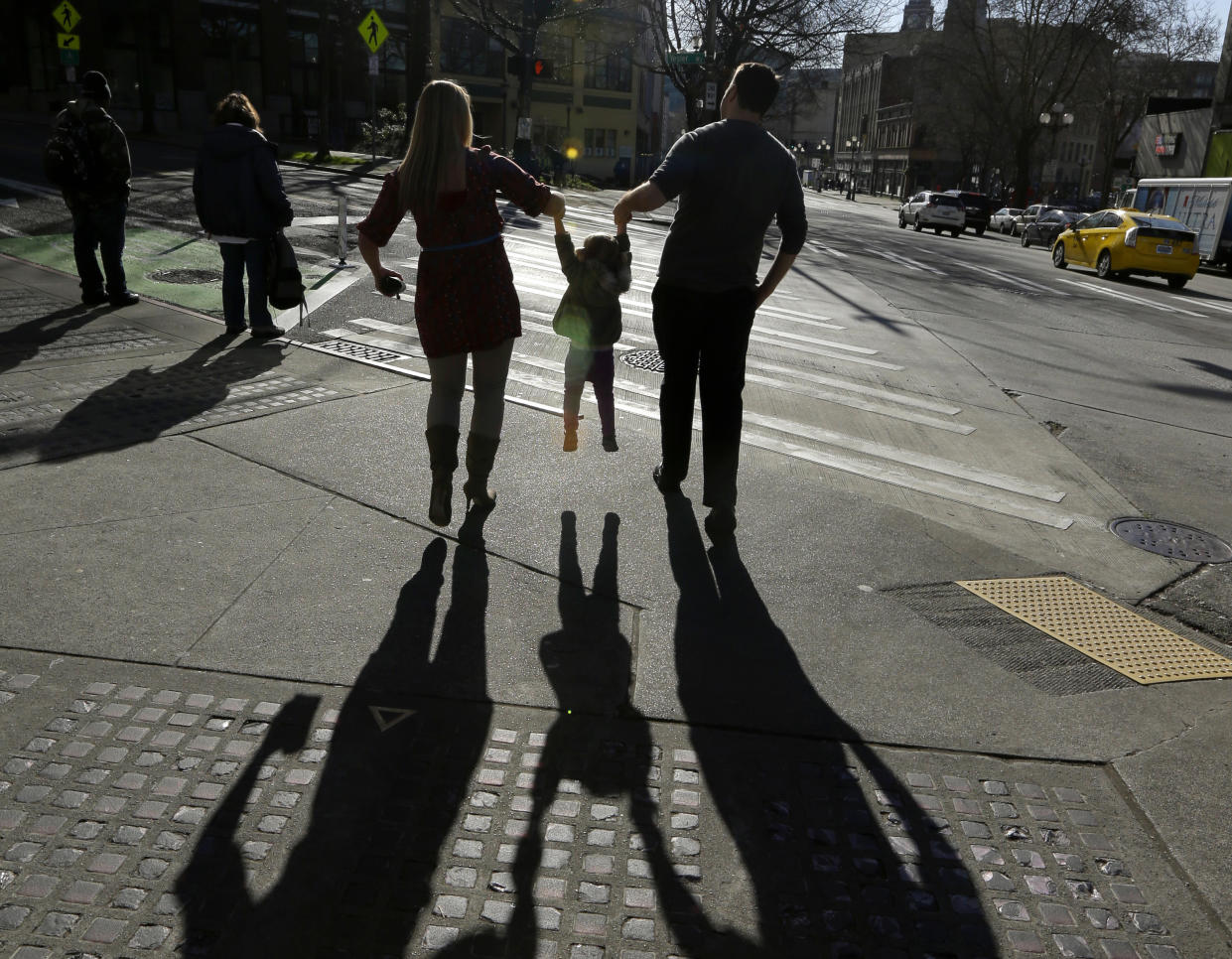The tax credit that could do more for American pocketbooks than any New Year’s resolution
Many Americans are making promises to do better in 2024 with New Year’s resolutions to save money and spend it wisely.
Some, buoyed by the lingering holiday spirit, may vow to give some of that money to charity in the upcoming year — like those who helped a high school teacher in Las Vegas fulfill 600 Christmas wishes for her students by Venmoing money or dropping off gifts.
Those heart-breaking wishes included a bag of Taki chips "so I won’t feel hungry" or slippers "to protect me from the cold," according to a TikTok the teacher posted that went viral. Americans responded by gifting those items.
But those individual actions — as well meaning as they are — gloss over the reality that to help financially vulnerable Americans requires systemic change that often meets more resistance.
"We're not going to GoFundMe our way to a just economy," Bob Farrace, the national director of public affairs at the Children’s Defense Fund, told Yahoo Finance, referring to the crowdfunding platform that allows people to raise money.

One policy change that could do just as much good as any of these New Year's resolutions is for Congress to restore the enhanced child tax credit, a pandemic measure that temporarily raised the credit to a maximum of $3,600 per child from $2,000.
Additionally, the credit in 2021 was fully refundable, meaning if the credit exceeded the tax a family owed, they were entitled to the full amount anyway.
That allowed the very poorest families who have no income to receive the full credit. And half of the credit was distributed in advance in monthly installments, providing families with a reliable source of income throughout the last half of 2021.
The result? The credit helped to cut child poverty in half, with only 5.2% of US children in poverty in 2021 from 9.7% in 2020 and 12.6% in 2019. That goes much further than a one-time donation.
"If you're donating to a holiday wish list that will help a parent afford toys and clothes for their kids through the holiday season, those costs don't magically disappear," Ashley Burnside, senior policy analyst at the Center for Law and Social Policy, told Yahoo Finance.
"Once the holidays end, that family may very well still struggle to meet their bills each month," she added. "But when you implement a policy solution like expanding the child tax credit, that policy can support that same family throughout the year."
Since the credit’s expiration at the end of 2021, the child poverty rate has soared, hitting 12.4% in 2022. Food insecurity has also risen. But it’s been difficult to get lawmakers to reinstate the credit since then, though negotiations for a pared-down version are ongoing now.
The resistance is rooted in what Farrace calls the self-made narrative that still dominates American culture.
"We maintain this bizarre notion that poverty is a personal choice and that if we get poor people to work harder or acquire better money habits, they will stop being poor. And in the meantime, we will support them with food banks and other charity," he said.
"I certainly don't want to diminish that in any way, but we have to see charity as a supplement and not a solution," he added. "The fact is poverty is a choice, but it's not the choice that poor people make. It's a policy choice that the rest of us make."

Folks may also gravitate toward charity rather than supporting policy changes because it feels good to make a donation, and there’s an immediate impact that people don’t see with their tax dollars or their vote.
"That's gratifying for us," Farrace said.
And online donation campaigns are more personal. There’s an explanation of why someone needs money. Often the posting comes with a picture of whom you’re helping. And you can see in real time other people responding, making it feel like a community effort.
"I think it's harder for people to see how a policy would impact somebody day to day or how it would change their lives," Burnside said. "It's not as black and white as the description on a fundraiser."
But you can have both. Donating to those fundraising campaigns fulfills a family’s short-term need right now and that’s needed, Burnside said.
Policy action that you can support through voting will also provide that same family with more security down the line, so they won’t need to turn to strangers for help. That’s good, too.
"All those things need to happen at the same time," Burnside said, "but one can't come in place of the other."
Janna Herron is a Senior Columnist at Yahoo Finance. Follow her on Twitter @JannaHerron.
